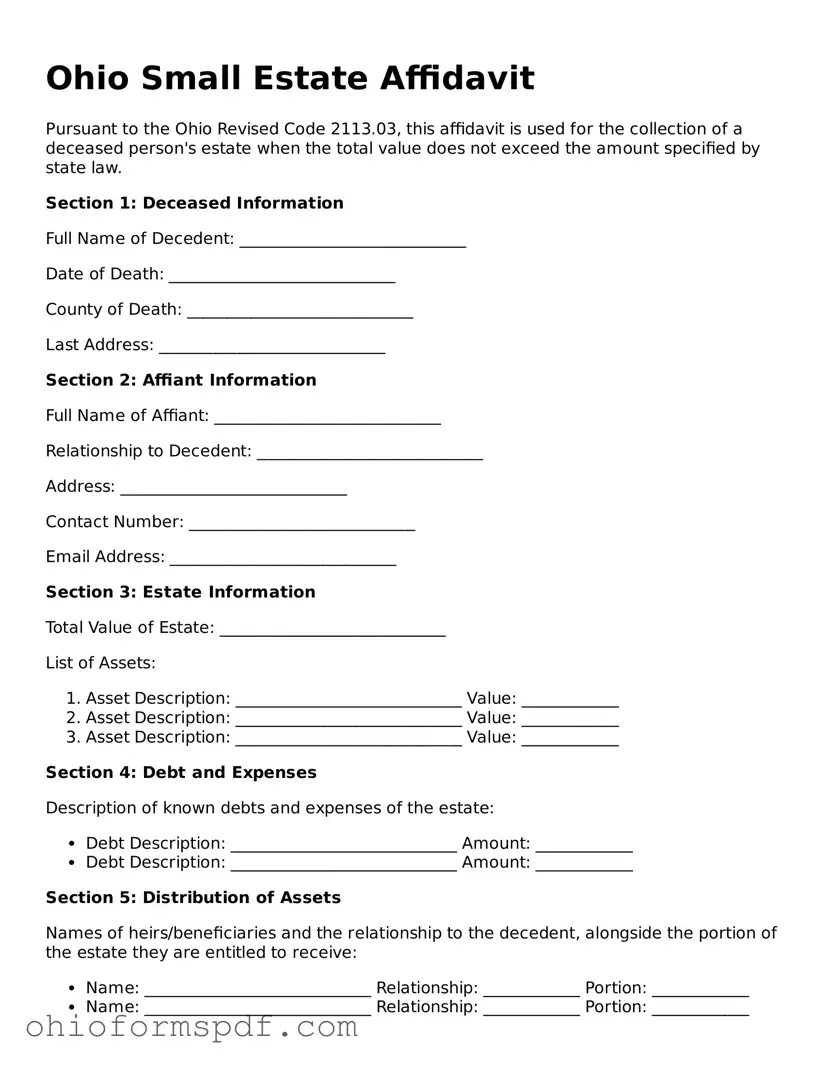Ohio Small Estate Affidavit
Pursuant to the Ohio Revised Code 2113.03, this affidavit is used for the collection of a deceased person's estate when the total value does not exceed the amount specified by state law.
Section 1: Deceased Information
Full Name of Decedent: ____________________________
Date of Death: ____________________________
County of Death: ____________________________
Last Address: ____________________________
Section 2: Affiant Information
Full Name of Affiant: ____________________________
Relationship to Decedent: ____________________________
Address: ____________________________
Contact Number: ____________________________
Email Address: ____________________________
Section 3: Estate Information
Total Value of Estate: ____________________________
List of Assets:
- Asset Description: ____________________________ Value: ____________
- Asset Description: ____________________________ Value: ____________
- Asset Description: ____________________________ Value: ____________
Section 4: Debt and Expenses
Description of known debts and expenses of the estate:
- Debt Description: ____________________________ Amount: ____________
- Debt Description: ____________________________ Amount: ____________
Section 5: Distribution of Assets
Names of heirs/beneficiaries and the relationship to the decedent, alongside the portion of the estate they are entitled to receive:
- Name: ____________________________ Relationship: ____________ Portion: ____________
- Name: ____________________________ Relationship: ____________ Portion: ____________
Section 6: Declarations
By signing this affidavit, I declare under penalty of perjury that the information provided is true and correct to the best of my knowledge. I understand that this document does not transfer title to real estate.
Signature of Affiant: ____________________________
Date: ____________________________
This document must be signed in the presence of a notary public.
Notary Public:
Name: ____________________________
Commission Expires: ____________________________
Seal:
